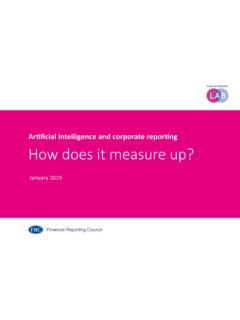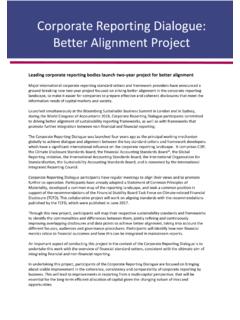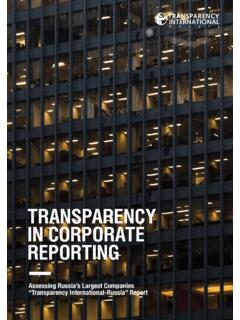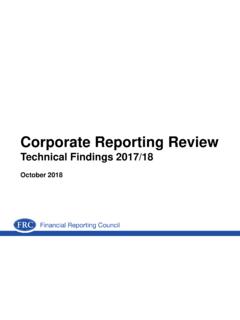Transcription of Academy of Management Learning & Education A …
1 A Retrospective View ofCorporate diversity TrainingFrom 1964 to the PresentROHINI ANANDS odexoMARY-FRANCES WINTERSThe Winters Group, its effectiveness has been questioned, over the past 30 years diversity traininghas become common practice in the corporate arena, as a myriad of workforcedifferences has gained increasing attention. The emphasis of this training has evolvedfrom compliance-oriented content (mid-1960s to early 1980s) to improving workingrelationships (mid-1980s to mid-1990s) to a more recent focus on accepting and leveragingall dimensions of diversity based on the belief that enhanced business performance willresult. Our purpose here is threefold: (1) to provide an historical context for diversitytraining in corporate America; (2) to highlight for illustrative purposes the diversitytraining experiences of two corporations (Sodexo, Inc., and Hewitt Associates) that havetaken comprehensive approaches; and (3) to address current issues in the context of thefuture of the is one of the most popular businesstopics of the last 2 decades.
2 It ranks with modernbusiness disciplines such as quality, leadership,and ethics. Despite this popularity, it is also oneof the most controversial and least in social justice philosophy, civil rightslegislation, and more recently, business strat-egy, diversity has evolved into a rather amor-phous field where the very word itself invokes avariety of meanings and emotional recent survey conducted among human re-sources (HR) and diversity practitioners examinedhow they defined diversity (Society for Human Re-sources Management , 2008). At least eight defini-tions emerged, and 71% of respondents indicatedthat their organization did not have an officialdefinition. That same year, according to a survey of265 HR professionals and diversity specialists fromcompanies with an average of 10,000 employees,55% of respondents had a diversity department,and over 80% reported having either mandatory orvoluntary training for all levels of employees (TheNew York Times,2007).
3 As recently as 2003, the diversity business wasestimated to be an 8 billion dollar industry (Han-sen, 2003). Yet diversity training in the corporatearena has a checkered history and a plethora ofcritics who are convinced that such efforts are awaste of time and recently as 2003, the diversitybusiness was estimated to be an 8billion dollar industry (Hansen, 2003).Yet diversity training in the corporatearena has a checkered history and aplethora of critics who are convincedthat such efforts are a waste of timeand address these issues we first, chronicle thehistory of diversity training in corporate , we draw on our combined 50 years expe-rience in the diversity industry to select two corpo-rate diversity case studies Sodexo, Inc., and He-witt Associates to give the reader examples ofreal diversity training programs. Finally, we ex-plore several current issues as well as consider thefuture of the industry.
4 Academy of Management Learning & Education , 2008, Vol. 7, No. 3, 356 of the Academy of Management , all rights reserved. Contents may not be copied, emailed, posted to a listserv, or otherwise transmitted without the copyright holder sexpress written permission. Users may print, download or email articles for individual use 1. Precursor to diversity :Focus on ComplianceThe 1960s and 1970sTo understand the evolution of diversity training , itis useful to trace its roots. There is a tendency togroup any training that is associated with race,gender, ethnicity, or other demographic differenceunder the umbrella of diversity ; however, thereare specific types of training , some of which pre-date the Civil Rights Act of 1964, that should berecognized as separate and distinct from diversitytraining, including race relations, anti-Semitism,and anti-racism training . Such training , while vitaland an important part of the history that has influ-enced today s genre of diversity training , is outsidethe focus of this diversity training efforts in the 1960s cen-tered on legislation and compliance.
5 Title VII ofThe Civil Rights Act of 1964 made it illegal foremployers with more than 15 employees to dis-criminate in hiring, termination, promotion, com-pensation, job training , or any other term, condi-tion, or privilege of employment based on race,color, religion, sex, or national origin. Since itsenactment, Title VII has been supplemented withlegislation that prohibits discrimination on the ba-sis of pregnancy, age, and disability. In addition,sexual harassment is also now deemed to be ille-gal under Title landmark legislation spawned an era oftraining in the late 1960s and 1970s, largely inresponse to the barrage of discrimination suits thatwere filed with the Equal Employment OpportunityCommission (EEOC). If the EEOC or state agenciesfound probable cause for discrimination, one ofthe remedies was typically a court-ordered man-date for the organization to train all employees inantidiscriminatory behavior.
6 For example, a 1977 EEOC consent decree with Duquesne Light Com-pany in response to alleged discrimination againstBlacks and women required Duquesne to provideEEO training to its managers (Equal EmploymentOpportunity Commission, 2008).Obviously companies wanted to avoid costlyand embarrassing lawsuits and negative public-ity, and therefore, many voluntarily implementedtraining focused on imparting information on thelegal requirements to managers and rank-and-fileemployees. However, there were some notable ex-ceptions to strictly employing a compliance-and-litigation-avoidance approach. For example, IBMwas one of the first companies to state that diver-sity was a moral imperative, and it continues toespouse that philosophy today (IBM, 2007). Ivancev-ich and Gilbert (2000) report that Xerox Corporationalso adopted a beyond-compliance, social respon-sibility position in the 1960s. The three underlyingcauses of this position were the personal commit-ment of founder Joseph C.
7 Wilson and concernsmotivated by riots in Rochester in the mid-sixties,and a class action discrimination suit in 1971. Ac-cording to Ivancevich and Gilbert, Xerox top man-agement has maintained a strong support for di-versity, and as a result, the workforce at the timeof their publication was more diverse than thegeneral population (2000: 80).Notwithstanding these and other notable excep-tions, based on our experience, most training dur-ing this era was primarily the imparting of knowl-edge with recitations on the law and companypolicies, a litany of do s and don ts and maybe acouple of case studies for the participants to pon-der. The length of training varied widely from 1hour to a full day, with a typical length of 4 most companies, the training was a one-timeevent, but some required (and many still require)brief periodic refreshers of company policies andsignatures from every employee to acknowledgethat they had read and understood the policies andthe consequences of of the early antidiscriminationtraining often left with a variety of emotions, fewof them positive.
8 Because the training focusedprimarily on treating historically underrepre-sented minorities and women fairly and equita-bly in White male-dominated environments andon avoidance of lawsuits, nonmembers of thesegroups resented their exclusion and felt thatpreferential treatment was being afforded to thetargeted reason that the training did not resonatewell with the dominant group is that the contentmade little connection to how the recommendedchanges in behavior would improve business re-sults. Although the late Kaleel Jamison, founder ofthe Kaleel Jamison Consulting Group, outlined theneed to transform organizational culture, polices,practices and structures to create work environ-ments that allow all employees to do their bestwork (Jamison, 1978), it would be a full decadebefore companies earnestly considered the role ofinclusive organizational cultures as key drivers forthe success of diversity 2.
9 Focus on AssimilationThe Early 1980sCompliance-oriented training continued into theearly 1980s, but there was a period of retreat fromthe intensity of the previous decade. The greatest2008357 Anand and Wintersincrease in racial and gender diversity in the work-place occurred in the 1970s during the period ofmost intense government enforcement of the CivilRights Act of 1964. The rate of change stalled dur-ing the 1980s, with the exception of increases ofwomen entering the workplace (Tomaskovic-Devey, Stainback, Taylor, Zimmer, Robinson, &McTague, 2006). The decreased focus on compli-ance was due at least in part to President Reagan sderegulation policies, which contended that in-tensive, fine-grained regulation of business ledfirms to opt out of compliance altogether. Goals,such as .. reduced discrimination, would be elu-sive under intense regulation (Kalev & Dobbin,2006: 862). Reagan thought that employers shouldbe more responsible for their own discriminationpolicing.
10 He appointed Clarence Thomas as headof the EEOC, and Thomas disapproved of concili-ation agreements that included goals and timeta-bles for increasing representation of underrepre-sented groups, with the intent of giving employersmore latitude. With less scrutiny from the federalgovernment, many companies turned their atten-tion to other pressing concerns of the day, such asoffshore competition and improving quality. Affir-mative action and equal employment training ,while still included in the training catalogs, werescaled back as a cost-cutting effort, perhaps man-datory only for those in managerial positions andin some instances eliminated altogether for therank-and-file organizations that conducted training dur-ing this lull were more likely to present contentwith the objective of helping women and people ofcolor to assimilate into existing corporate culturesby creating special training programs based onthe assumption that these new corporate entrantswere less prepared because they had not yet de-veloped the necessary managerial skills to be ef-fective managers (Fernandez, 1981).







